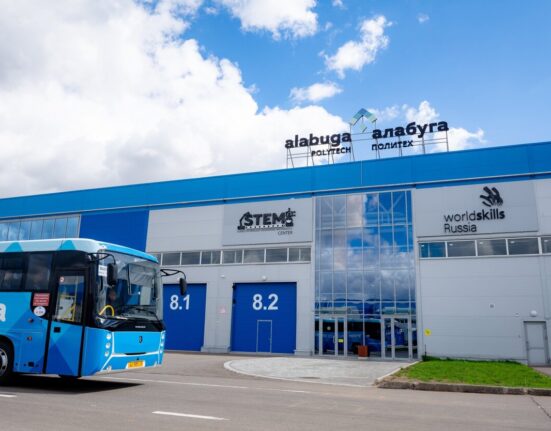On February 29, in the Chinese city of Chongqing, Kazakhstan’s national railways company KTZ and the logistics platform Yuxinou (Chongqing) Logistics Co., Ltd signed an agreement on the organization and dispatch of 200 container trains through Kazakhstan, including along the Trans-Caspian International Transport Route, with a cargo volume of more than 20 thousand 20-foot equivalent units (TEUs).
Since the beginning of 2024, KTZ has reached agreements with the logistics platforms of Xi’an, Jiangsu, Beijing, Zhengzhou, and Chongqing in China on the organization of 3,500 transit container trains through the territory of Kazakhstan, totaling 350 thousand TEUs.
These agreements are the latest moves aimed at turning Kazakhstan into the key transit hub on Eurasian continent.
On February 28, Kazakhstan President Kassym-Jomart Tokayev via teleconference took part in the opening ceremony of the Transport and Logistics Center in China’s Xi’an.
This event was preceded by an agreement between the leaders of Kazakhstan and China on the construction of a logistics center in the dry port of Xi’an, which will connect the Chinese city of Shaanxi with Kazakhstan, Central Asia and further with Europe.
The city of Xi’an is a major transit hub in China, with up to 40% of the total number of container trains from China to the EU formed there.
The design capacity of the Kazakh terminal in the dry port of Xi’an is more than 66.5 thousand TEUs per year. The terminal will strengthen Kazakhstan’s position as a reliable transit hub in Eurasia.
President Tokayev emphasized the importance of opening the Kazakh terminal in Xi’an: “This is a project launched as part of the global Belt and Road initiative. This project will give new impetus to the development of the Trans-Caspian International Transport Corridor, as well as strengthen trade and economic cooperation in Eurasia.”
According to a 2023 study of the European Bank for Reconstruction and Development (EBRD) on sustainable transport connections between Central Asia and Europe, the Trans-Caspian Corridor could be the best cargo transportation route and an alternative to the Eurasian Northern Corridor running through Russia, which has been affected by geopolitical bottlenecks.
According to the latest estimates, the volume of cargo moving through the Trans-Caspian International Transport Route (TITR) could, by 2040, significantly increase from the current volume of almost 20,000 20-foot equivalent units (TEUs). With freight steadily increasing along this route, existing Caspian Sea infrastructure might become a bottleneck. The EBRD study underlined the need to rehabilitate and modernise rail and road networks, expand rolling stock, improve border crossing points, and build multimodal logistics centres and auxiliary network connections across Central Asia.
In January 2024, at the Investors Forum for EU-Central Asia Transport Connectivity in Brussels, the EBRD expressed its readiness to invest around €1.5 billion in Trans-Caspian Corridor-related infrastructure and associated transport solutions over the next 2-3 years. In addition, at the Brussels Investors Forum, the Ministry of Transport of Kazakhstan and the EBRD agreed to cooperate on strategic initiatives in road, rail, port and logistics infrastructure to develop the TITR. According to the memorandum of understanding signed by the EBRD and Kazakhstan, the parties will work to facilitate the increase in freight traffic between Central Asia and Europe through Kazakhstan by implementing necessary reforms and securing the financing needed for sustainable multimodal transport infrastructure.
Some of the priority projects will include the modernisation of container handling equipment and the development of a container terminal at Kazakhstan’s Aktau Port, double tracking and the electrification of the national railway network, and the development and rehabilitation of key roads, the EBRD reported on its website.
Photo: akorda.kz




